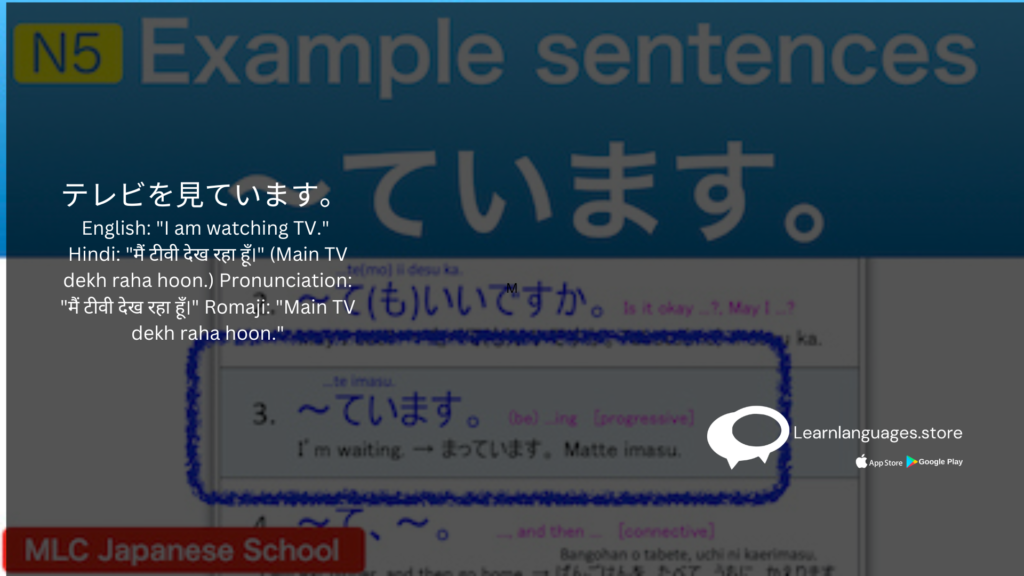Unraveling the Mystery of “〜ています (te imasu)” in Japanese Grammar
Unraveling the Mystery of “〜ています (te imasu)” in Japanese Grammar
Estimated reading time: 3 minutes

INTRODUCTION:
Konnichiwa, language learners! Today, we’re diving into the fascinating world of Japanese grammar with the versatile expression “〜ています (te imasu).” This grammar point allows us to talk about ongoing actions or states in the present tense, and trust me, it’s more exciting than it sounds! So, let’s embark on this linguistic adventure together, filled with laughter, humor, and plenty of examples to help you grasp this concept effortlessly.
Understanding “〜ています (te imasu)”:
In Japanese, “〜ています (te imasu)” is used to indicate ongoing actions or states in the present tense. It’s the equivalent of the English present continuous tense (-ing form). This grammar structure is formed by conjugating the verb into its て-form (te-form) and adding います (imasu) after it.
Sentence Structure:
[Verb (て-form)] + います
Exceptions and Usage:
While “〜ています (te imasu)” is generally straightforward, there are a few exceptions and important points to keep in mind:
- Exceptions: Some verbs have irregular て-forms, so it’s essential to memorize them. For example, the て-form of 食べる (taberu – to eat) is 食べて (tabete), not 食べてい (tabetei).
- Usage: “〜ています (te imasu)” is commonly used to talk about ongoing actions or states, such as activities one is currently engaged in or conditions one is currently experiencing. For example, 食べています (tabete imasu) means “I am eating,” and 寝ています (nete imasu) means “I am sleeping.”
Examples with Pronunciation and Romaji:
- テレビを見ています。 English: “I am watching TV.” Hindi: “मैं टीवी देख रहा हूँ।” (Main TV dekh raha hoon.) Pronunciation: “मैं टीवी देख रहा हूँ।” Romaji: “Main TV dekh raha hoon.”
- 友達と話しています。 English: “I am talking with friends.” Hindi: “मैं दोस्तों के साथ बात कर रहा हूँ।” (Main doston ke saath baat kar raha hoon.) Pronunciation: “मैं दोस्तों के साथ बात कर रहा हूँ।” Romaji: “Main doston ke saath baat kar raha hoon.”
Identifying in a Sentence:
In the sentence “友達と話しています” (Tomodachi to hanashite imasu), “〜ています (te imasu)” indicates that the speaker is currently engaged in the action of talking with friends.
Conclusion:
Congratulations, language enthusiasts! You’ve now unlocked the secrets of “〜ています (te imasu)” in Japanese grammar. Armed with this knowledge, you can confidently express ongoing actions and states in the present tense, adding depth and precision to your conversations. Keep practicing, and soon you’ll be chatting away like a native speaker!
Arigatou gozaimasu for joining me on this linguistic journey. Until next time, mata ne! 🎌
-
Product on sale
 Japanese N4
Japanese N4₹18,300.00
₹24,300.00 -
Product on sale
 Japanese N5
Japanese N5₹16,300.00
₹18,300.00
Learn Languages Store
Vashi,
Email: services@learnlanguages.store










